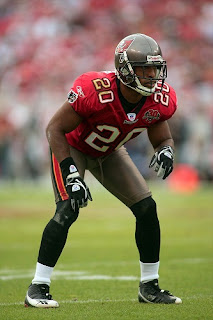Age: 23
2nd
season in pro football & with Stars
College: North Carolina
Height: 6’2” Weight: 195
Prelude:
A three-time
All-Atlantic Coast Conference back in college, Bryant was chosen by the Stars
in the first USFL territorial draft and went with the new league (the
Washington Redskins selected him in the 7th round of the ’83 NFL
draft even though he had already signed with the USFL). He moved directly into
the starting lineup and quickly became the focal point of the ground-oriented
offense. Bryant rushed for 1442 yards and 16 TDs, caught 53 passes for another
410 yards and a score, and received MVP honors from the league as well as
consensus first-team All-USFL recognition.
1984 Season Summary
Appeared in 15
of 18 games
[Bracketed
numbers indicate league rank in Top 20]
Rushing
Attempts – 297
[1, tied with Joe Cribbs]
Most
attempts, game – 27 (for 114 yds.) vs. Tampa Bay 4/1
Yards – 1406
[2]
Most yards,
game – 194 yards (on 24 carries) at Denver 6/8
Average gain
– 4.7 [11]
TDs – 13 [6,
tied with Leon Perry]
100-yard
rushing games – 5
Pass
Receiving
Receptions – 48
Most
receptions, game – 5 (for 34 yds.) vs. Oakland 3/18
Yards – 453
Most yards,
game – 67 (on 3 catches) vs. Pittsburgh 6/4
Average gain –
9.4
TDs – 1
Scoring
TDs – 15 [5,
tied with Richard Johnson & Kevin Long]
Points – 90
[5, tied with Richard Johnson & Kevin Long]
Postseason: 3 G
Rushing
attempts – 80
Most rushing
attempts, game – 29 vs. Arizona, USFL Championship
Rushing yards
– 384
Most rushing
yards, game – 152 vs. Birmingham, Eastern Conference Championship
Average gain
rushing – 4.8
Rushing TDs –
5
Pass
receptions – 4
Most pass
receptions, game – 2 vs. New Jersey, USFL First Round playoff
Pass
receiving yards – 45
Most pass
receiving yards, game - 32 vs. New Jersey, USFL First Round playoff
Average yards
per reception – 11.3
Pass
Receiving TDs – 1
Awards & Honors:
1st
team All-USFL: League, Sporting News, College & Pro Football Newsweekly,
Pro Football Weekly
Stars went 16-2
to finish first in the USFL Atlantic Division with the league’s best record.
Won First Round playoff over New Jersey Generals (28-7), Eastern Conference
Championship over Birmingham Stallions (20-10), and USFL Championship over
Arizona Wranglers (23-3).
Aftermath:
Bryant
continued to be one of the league’s best runners, even though battling
occasional injuries, tying for fourth in ’85 with 1207 yards. He ended up
gaining 4055 yards over the course of the three USFL seasons, and the Stars won
the league championship in the last two. Following the demise of the USFL,
Bryant joined the Redskins where he spent four seasons from 1986 to ’90,
missing all of 1989 due to a neck injury. In the NFL, he battled injuries and
was utilized more for his pass receiving skills, catching over 40 passes in
each of his first three years but only once compiling as many as 100 carries
(108 in 1988). With Washington, he rushed for a total of 1186 yards and caught
154 passes for 1634 yards.
--
Highlighted Years features players who were consensus
first-team All-League* selections or league* or conference** leaders in the
following statistical categories:
Rushing:
Yards, TDs (min. 10)
Passing:
Yards, Completion Pct., Yards per Attempt, TDs, Rating
Receiving:
Catches, Yards, TDs (min. 10)
Scoring: TDs,
Points, Field Goals (min. 5)
All-Purpose:
Total Yards
Defense:
Interceptions, Sacks
Kickoff
Returns: Average
Punt Returns:
Average
Punting:
Average
*Leagues
include NFL (1920 to date), AFL (1926), AFL (1936-37), AAFC (1946-49), AFL
(1960-69), WFL (1974-75), USFL (1983-85)
**NFC/AFC
since 1970













